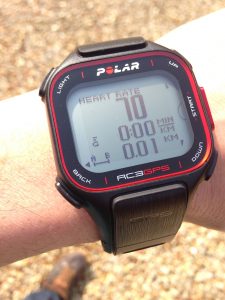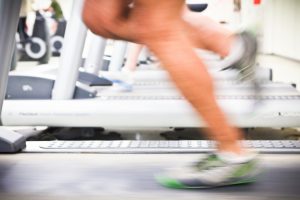Our research on physical activity
Our research on physical activity focuses on how altering physical environments, such as workplaces, might help increase levels of physical activity and reduce sedentary behaviour.
Click on the images below to find out more about the work we have been doing in this area:
Key Studies:
Status: Ongoing. Mantzari et al. Is the Intention-Behaviour Gap Greater amongst the More Deprived? A Meta-Analysis of Five Studies on Physical Activity, Diet, and Medication Adherence in Smoking Cessation. Vasiljevic, Ng, Griffin, Sutton, Marteau. 2016. Self- monitoring as a way to improve physical activity levels? Findings from a qualitative evaluation of using different physical activity monitoring devices (‘Get moving’ trial)
 Self-monitoring has the potential to improve health-related behaviors, by providing feedback used by individuals to both assess their status and provide ongoing support towards a set goal. To assess the impact of self-monitoring on levels of physical activity, 500 Cambridge Biomedical campus staff took part in the ‘Get moving’ study and were randomised to either a no-intervention control group or one of three minimal contact interventions: i) Self-monitoring diary; ii) Web-based feedback about levels of activity through wireless transmission of data from a wrist-worn tri-axial activity monitor; or iii) Activity feedback plus a web-based automated “virtual coach” providing tailored feedback on progress with diet and activity as well as theory-based support. The present qualitative study explored intervention participants’ experiences of the process and nature of feedback in order to identify how they acted upon or processed the information they receive. Findings revealed that accounts did not differ according to allocated monitoring device but included other people and features of the environment leading to the conclusion that self-monitoring is neither solely about “self” or exclusively about “monitoring”. This suggests that a more expansive social and material understanding of feedback can give insight into the ways information is made active and meaningful for individuals in their everyday contexts.
Self-monitoring has the potential to improve health-related behaviors, by providing feedback used by individuals to both assess their status and provide ongoing support towards a set goal. To assess the impact of self-monitoring on levels of physical activity, 500 Cambridge Biomedical campus staff took part in the ‘Get moving’ study and were randomised to either a no-intervention control group or one of three minimal contact interventions: i) Self-monitoring diary; ii) Web-based feedback about levels of activity through wireless transmission of data from a wrist-worn tri-axial activity monitor; or iii) Activity feedback plus a web-based automated “virtual coach” providing tailored feedback on progress with diet and activity as well as theory-based support. The present qualitative study explored intervention participants’ experiences of the process and nature of feedback in order to identify how they acted upon or processed the information they receive. Findings revealed that accounts did not differ according to allocated monitoring device but included other people and features of the environment leading to the conclusion that self-monitoring is neither solely about “self” or exclusively about “monitoring”. This suggests that a more expansive social and material understanding of feedback can give insight into the ways information is made active and meaningful for individuals in their everyday contexts.
Does using sit-stand desks at work affect how many calories people burn and how much time they spend sitting over the entire day?
 Office-based workers spend the majority of their working day sitting, which may put them at risk. One potential way of reducing workplace sitting is through the installation of sit-stand desks (i.e. adjustable desks which allow individuals to work in sitting or standing positions). However, key uncertainties remain with regards to the use of such desks, including their effect on the amount of energy people expend when using them at work and during the rest of the day, and their impact on sitting time in and outside of the workplace in the longer-term. We a running a feasibility study to address these uncertainties. The study has been registered on the ISRCTN registry: http://www.isrctn.com/ISRCTN44827407 and the protocol has been published.
Office-based workers spend the majority of their working day sitting, which may put them at risk. One potential way of reducing workplace sitting is through the installation of sit-stand desks (i.e. adjustable desks which allow individuals to work in sitting or standing positions). However, key uncertainties remain with regards to the use of such desks, including their effect on the amount of energy people expend when using them at work and during the rest of the day, and their impact on sitting time in and outside of the workplace in the longer-term. We a running a feasibility study to address these uncertainties. The study has been registered on the ISRCTN registry: http://www.isrctn.com/ISRCTN44827407 and the protocol has been published.Meta-analyses find no evidence that acting on intentions to improve levels of physical activity is socially patterned
 There is inconsistent evidence that more, compared with less socially and materially deprived individuals are less likely to act on intentions to improve health-related behaviour, including levels of physical activity. Conducting meta-analyses of studies looking at physical activity and two other health behaviours (diet and medication adherence in smoking cessation), we found no evidence of socioeconomic differences in acting on intentions to change behaviour. For analyses using objectively measured behaviour, the gap between self-efficacy and behaviour was greater among those living in more deprived areas. This suggests self-efficacy may be playing a role in the social patterning seen in health-related behaviours, including physical activity.
There is inconsistent evidence that more, compared with less socially and materially deprived individuals are less likely to act on intentions to improve health-related behaviour, including levels of physical activity. Conducting meta-analyses of studies looking at physical activity and two other health behaviours (diet and medication adherence in smoking cessation), we found no evidence of socioeconomic differences in acting on intentions to change behaviour. For analyses using objectively measured behaviour, the gap between self-efficacy and behaviour was greater among those living in more deprived areas. This suggests self-efficacy may be playing a role in the social patterning seen in health-related behaviours, including physical activity.
Altering micro-environments to change population health behaviour: towards an evidence base for choice architecture interventions. Hollands, Shemilt, Marteau, Jebb, Kelly, Nakamura, Suhrcke & Ogilvie. 2013. Economic instruments for population diet and physical activity behaviour change: a systematic scoping review. Shemilt, Hollands, Marteau, Nakamura, Jebb, Kelly, Suhrcke, Ogilvie, 2013. Choice architecture scoping review
 We completed a systematic scoping review of studies assessing the effects of choice architecture interventions in micro-environments on diet, physical activity, alcohol and tobacco-related behaviours. Of the 346 studies found, 19% concerned physical activity. We proposed a definition and typology of choice architecture interventions and used these to identify and map the large body of available evidence. Although preliminary, this conceptual groundwork provides a foundation for future research to estimate the effectiveness of choice architecture interventions.
We completed a systematic scoping review of studies assessing the effects of choice architecture interventions in micro-environments on diet, physical activity, alcohol and tobacco-related behaviours. Of the 346 studies found, 19% concerned physical activity. We proposed a definition and typology of choice architecture interventions and used these to identify and map the large body of available evidence. Although preliminary, this conceptual groundwork provides a foundation for future research to estimate the effectiveness of choice architecture interventions.Scoping review of economic interventions to improve diet and physical activity
 We completed a systematic scoping review of studies assessing the effect of specific economic interventions that change prices or income on diet and physical activity-related behaviours and their corollary outcomes. Whilst only a minority (11%) of the identified studies included outcomes related to physical activity, the review was successful in i) identifying four types of economic intervention in use, ii) identifying ways in which future economic studies could be strengthened, and iii) providing a typology to aid future studies.
We completed a systematic scoping review of studies assessing the effect of specific economic interventions that change prices or income on diet and physical activity-related behaviours and their corollary outcomes. Whilst only a minority (11%) of the identified studies included outcomes related to physical activity, the review was successful in i) identifying four types of economic intervention in use, ii) identifying ways in which future economic studies could be strengthened, and iii) providing a typology to aid future studies.
Publications related to physical activity:
2019
2017
2016
2015
2013





